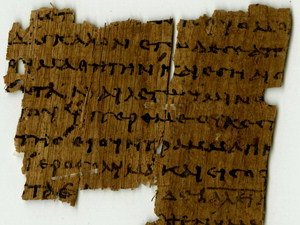Research project combines astrophysics and archeology to decipher ancient texts

Contacts:
Rhonda Zurn, College of Science and Engineering, rzurn@umn.edu, (612) 626-7959
Preston Smith, University News Services, smith@umn.edu, (612) 625-0552
MINNEAPOLIS / ST. PAUL (07/28/2011) – University of Minnesota researchers are part of an international collaboration launched this week by Oxford University and the Egypt Exploration Society that applies the analysis tools of astrophysics with archeology to help decipher a collection of ancient Egyptian papyri.
Physics and astronomy associate professor Lucy Fortson in the College of Science and Engineering will lead the University of Minnesota team that includes faculty and staff from the Classical and Near Eastern Studies Department in the College of Liberal Arts and the Minnesota Supercomputing Institute.
The collaborative project, called Ancient Lives, is putting hundreds of thousands of images of fragments of papyri written in Greek online. The collection, named the Oxyrhynchus Papyri, was excavated more than a hundred years ago yet archeologists and classics scholars have only managed to transcribe a small percentage of these fragments.
“It’s like if you have thousands of puzzles, take all the pieces and mix them together in one big box. Then you try to put the puzzles together,” Fortson said. “It’s an enormous task.”
Because of the huge number of images involved, researchers need volunteers from the public to look through and catalog them or transcribe the text using a simple web interface, which displays both known and unknown texts. No knowledge of ancient Greek is required.
This is where Fortson’s expertise and Zooniverse, a collaboration of astrophysicists and public volunteers, comes in. Members of the general public will be able to help “read” the texts by locating the placement of ancient Greek letters and matching the shapes of letters in order to help create strings of letters. This will allow the computer algorithms to learn to translate and recognize the various characters. Using a computer interface first developed for the Zooniverse collaboration to allow the general public to identify the shapes of galaxies, volunteers will be able to click on places where they think a letter might be. This data should train the algorithms to improve their ability to translate the texts.
“It’s very exciting that we can use today’s modern tools of astrophysics to get specific information about everyday life in ancient times,” Fortson said. “But it’s really the help from volunteers that will make the difference.”
Professor Fortson is the lead researcher of a grant totaling nearly $250,000 entitled, “The Data Deluge: Applying Data Processing Techniques Derived from Astrophysics Citizen Science Projects to Research Problems in Egyptian Papyrology.” Other University of Minnesota researchers who are part of the team are Nita Krevans and Philip Sellew, faculty members in the College of Liberal Arts Classical and Near Eastern Studies Department, and Anne-Francoise Lamblin from the Minnesota Supercomputer Institute. The team will also hire a post-doctoral fellow in papyrology to oversee volunteer citizen transcribers who will identify letters on these ancient scraps of books and documents.
The Oxyrhynchus Papyri are housed at Oxford University and belong to the Egypt Exploration Society. Texts will eventually be published and numbered in the Society's Greco-Roman Memoirs series in the volumes entitled “The Oxyrhynchus Papyri.”
For more information about the project visit, www.ancientlives.org. Images of the papyri are available to download at
www.ox.ac.uk/media/news_releases_for_journalists/110725.html.
